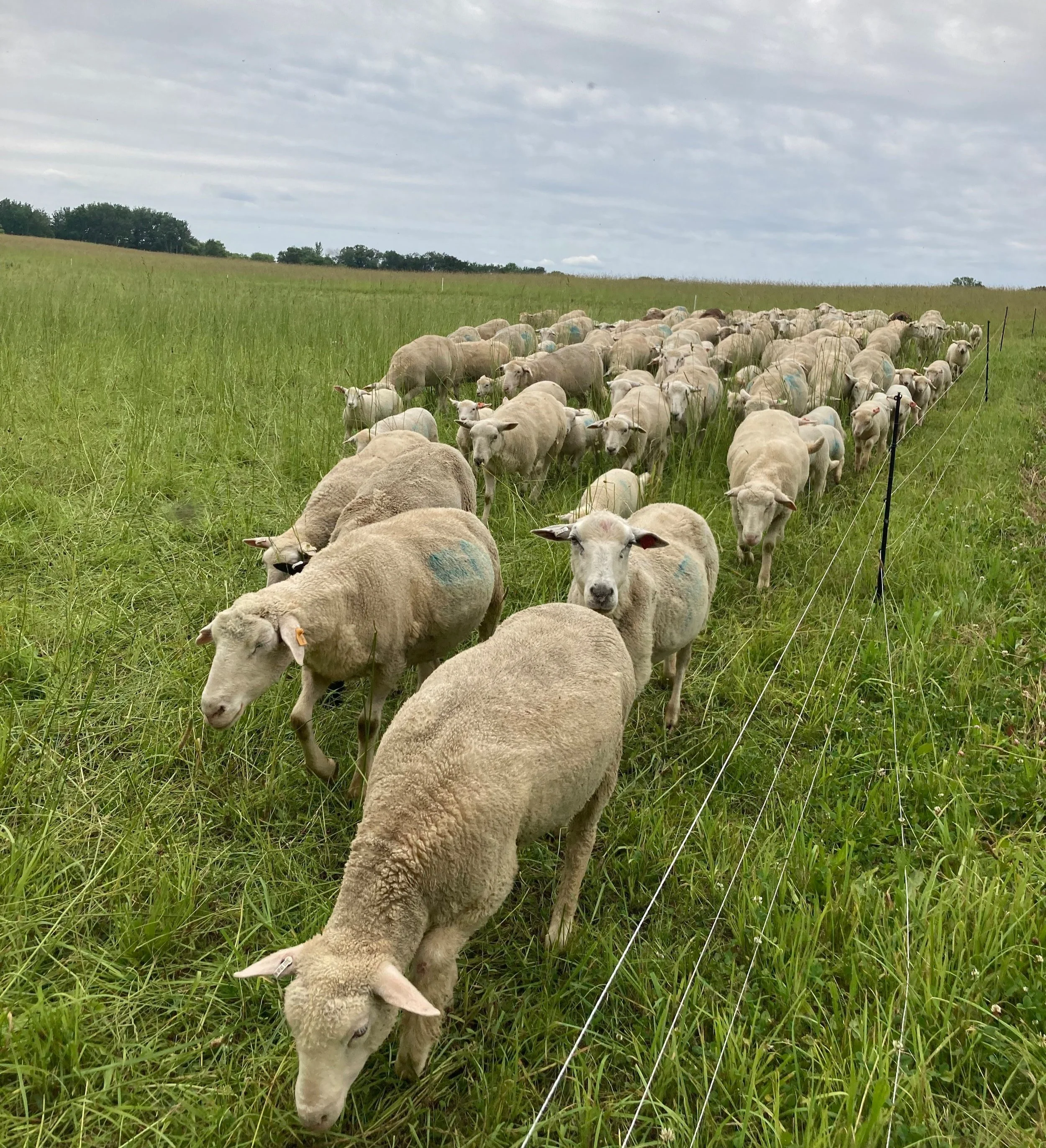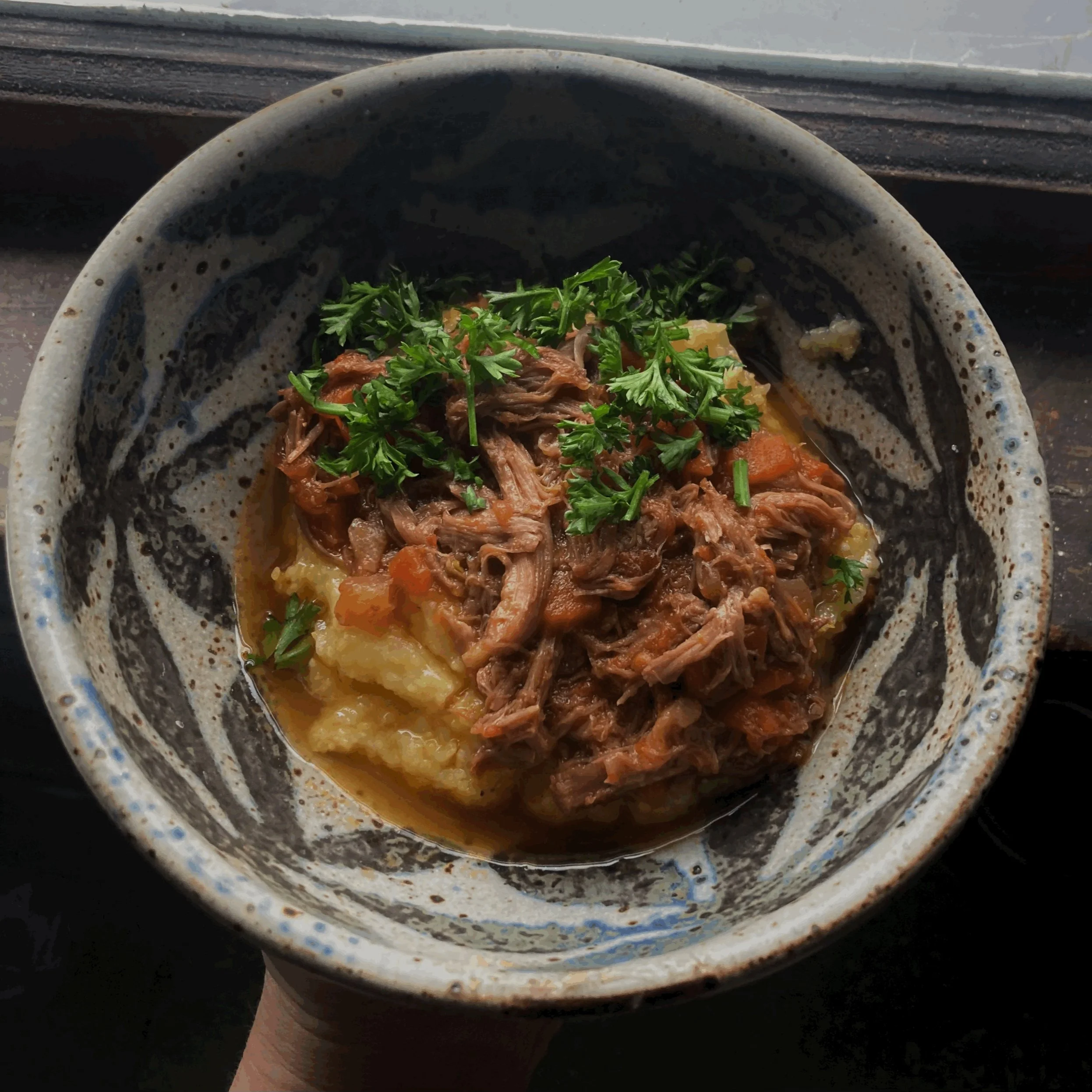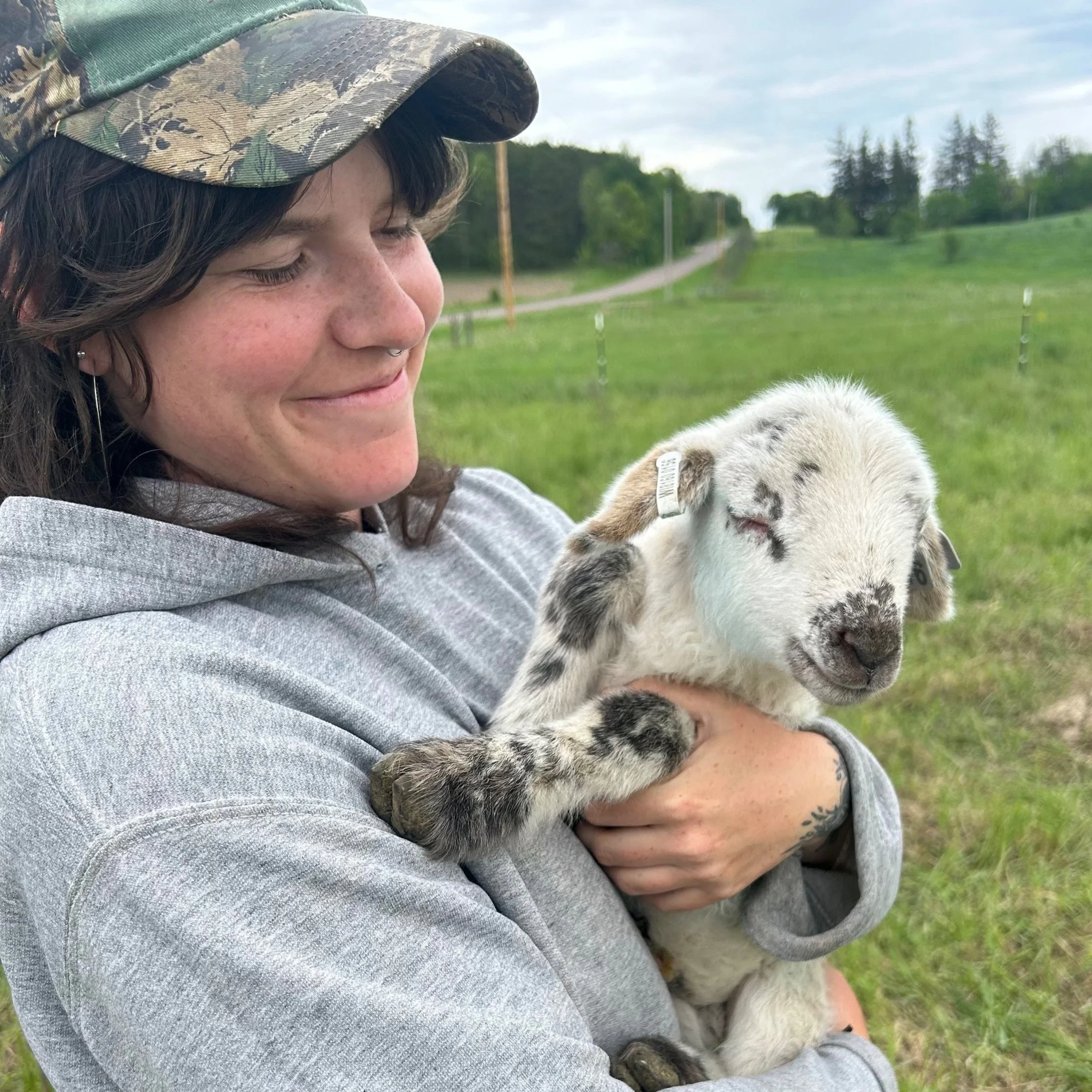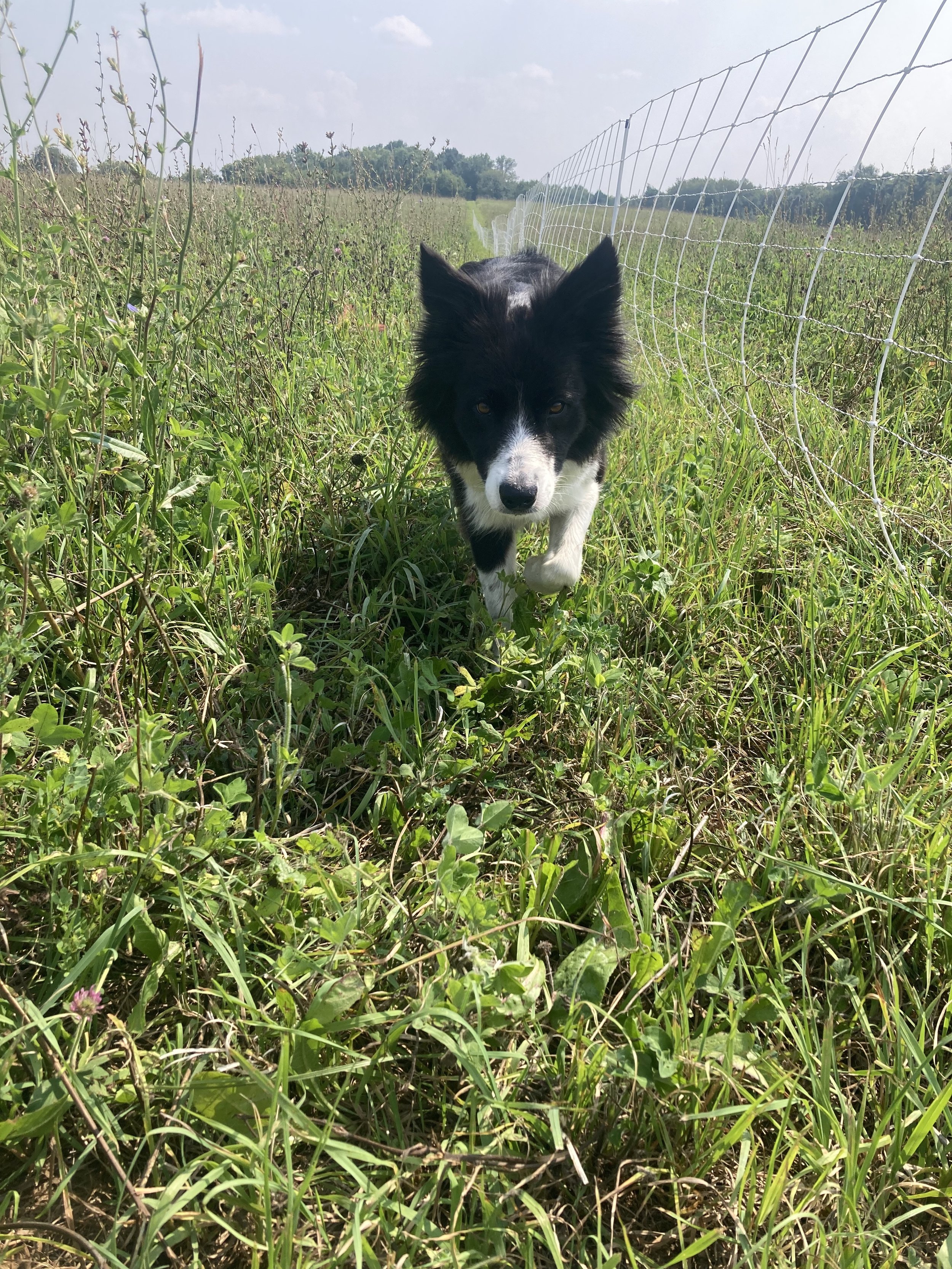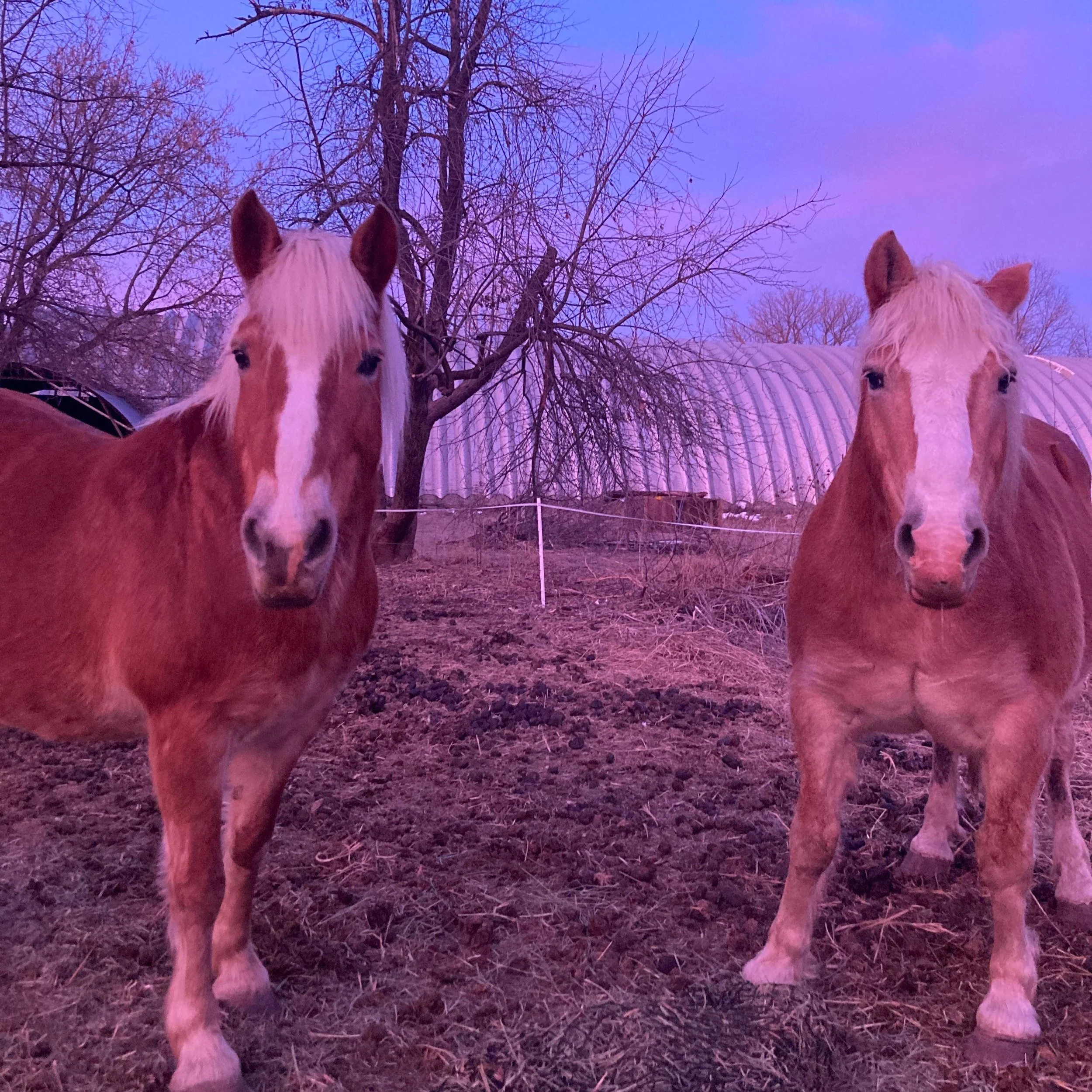About Riverbed Lamb
The Riverbed flock is based just west of Mankato and grazes a few sites throughout the river valley. With a focus on regenerative + rotational grazing, we move quickly across pastures to ensure soil and animal health, growing grass-fed lamb and wool for community in Mankato and the Twin Cities.
Why Rotational Grazing?
Rotational grazing is a strategy that helps regenerate soil and pasture while also prioritizing animal health. Instead of having one big pasture that animals graze continuously, rotational grazing breaks that space up into smaller paddocks and moves animals through them quickly. This prevents them from only eating their favorite plants and helps them graze more evenly, lessening pressure on specific plants. It distributes their manure more consistently and allows for longer rest time for the pasture. A longer rest time helps plants bounce back and grow stronger root systems, which in turn improves the soil health.
Rotational grazing is best for animal health in part because it helps shepherds tune into the flock. Getting eyes on the animals everyday and seeing how they move from paddock to paddock, we get to know their behaviors and movements so it’s easier to see when someone is sick or injured. Rotational grazing encourages close attention to the animals and pasture which helps ensure their health and wellbeing.
Why Grass-fed?
Grass-fed lamb is good for land, for the sheep, and for you!
Animals raised entirely on pasture provide nutrient dense protein and a higher content of omega 3 fatty acids than conventionally raised meats. Some people consider lamb to be the “Salmon of the Land” because its omega 3:6 ratios are comparable to salmon and other fatty fish. Grass-fed lamb is a great way to source your protein and omega 3s locally!
Grass-fed lamb is not only good for you, it's delicious! Grass-fed lamb has a significant flavor difference from conventionally raised, grain-fed sheep. The sheep are eating what they’re born to eat, moving across land how they are meant to move and that’s reflected in the quality of their meat. The meat has a delicate flavor and tender texture and is perfect for trying out some new recipes and cooking techniques! Here’s a couple of my favorite recipes to try:
Lamb Shoulder with Citrus and Fennel Salad
The crew!
-
I’ve been working as a shepherd and veggie farmer for the past 5 years, usually landing somewhere between Minnesota and Wisconsin. Before becoming a shepherd I studied public health and textiles - a combination that led me to sheep! I love growing food for my community and bringing people into relationship with lifecycles. I care deeply about creating resilience in food, textiles, and lifeways in response to climate crisis. To me, that means healing relationships with land, raising animals that are adapted to living on pasture, and reconnecting to skills like slaughter, textile craft, and animal husbandry.
I’ve recently landed back in the Minnesota River Valley at my family’s farm. I feel so excited (and a little nervous!) for the opportunity to steward land here. I’m excited to bring animals back here for the first time in nearly 30 years and see how we can impact the land together.
-
Pippi is my Border Collie/Aussie mix who loves sticks, frisbees, and most of all herding sheep! I got her when she was a puppy and for the last 4.5 years we’ve been working together to herd sheep.
-
The flock is made up of about 20 Tamarack/Texel ewes and their lambs. Tamarack sheep were bred in Minnesota to be resilient in grass only systems and live their entire lives on pasture. Texels are a Dutch breed known for their lean muscle and feed efficiency. The sheep are rotationally grazed and are entirely grass fed and finished - the best for the sheep and ultimately the best for us, eaters! My goal as a shepherd is to let the sheep be sheep and allow their instincts to lead the way so they can do their rumination magic - turning grass into fat and protein!
-
Bonnie and Clyde are my Haflinger team who are teaching me how to drive! One of my longer term goals is to be using draft power in grazing systems. Working with draft power is a way to slow down, be light on the land, and be in relationship with the past and future. I’m excited to keep learning from these two and get them incorporated into systems!


